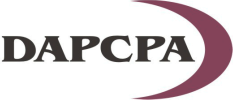The new rules, effective immediately, will reduce the tax benefits available to companies that have inverted, while also making new inversions more difficult, creates uncertainty for deals that are already in the works, such as the widely publicized Tim Horton's/Burger King merger.
Steps being taken include preventing inverted companies from gaining easier access to foreign profits using "hopscotch" loans; blocking inverted companies' tax-free access to foreign units' earnings; and tightening limits on ownership by the former U.S. owners of an inverted company, the Treasury said.
According to the US Treasury, the changes will:
· Prevent inverted companies from accessing a foreign subsidiary’s earnings while deferring U.S. tax through the use of creative loans, which are known as “hopscotch” loans(Action under section 956(e) of the code)
o Under current law, U.S. multinationals owe U.S. tax on the profits of their controlled foreign corporations (CFCs) although they don’t usually have to pay this tax until those profits are repatriated (that is, paid to the U.S. parent firm as a dividend). Profits that have not yet been repatriated are known as deferred earnings.
o Under current law, if a CFC, tries to avoid this dividend tax by investing in certain U.S. property—such as by making a loan to, or investing in stock of its U.S. parent or one of its domestic affiliates—the U.S. parent is treated as if it received a taxable dividend from the CFC.
o However, some inverted companies get around this rule by having the CFC make the loan to the new foreign parent, instead of its U.S. parent. This “hopscotch” loan is not currently considered U.S. property and is therefore not taxed as a dividend.
o Today’s notice removes benefits of these “hopscotch” loans by providing that such loans are considered “U.S. property” for purposes of applying the anti-avoidance rule. The same dividend rules will now apply as if the CFC had made a loan to the U.S. parent prior to the inversion.
· Prevent inverted companies from restructuring a foreign subsidiary in order to access the subsidiary’s earnings tax-free(Action under section 7701(l) of the tax code)
o After an inversion, some U.S. multinationals avoid ever paying U.S. tax on the deferred earnings of their CFC by having the new foreign parent buy enough stock to take control of the CFC away from the former U.S. parent. This “de-controlling” strategy is used to allow the new foreign parent to access the deferred earnings of the CFC without ever paying U.S. tax on them.
o Under today’s notice, the new foreign parent would be treated as owning stock in the former U.S. parent, rather than the CFC, to remove the benefits of the “de-controlling” strategy. The CFC would remain a CFC and would continue to be subject to U.S. tax on its profits and deferred earnings.
· Close a loophole to prevent an inverted companies from transferring cash or property from a CFC to the new parent to completely avoid U.S. tax (Action under section 304(b)(5)(B) of the code)
o These transactions involve the new foreign parent selling its stock in the former U.S. parent to a CFC with deferred earnings in exchange for cash or property of the CFC, effectively resulting in a tax-free repatriation of cash or property bypassing the U.S. parent. Today’s action would eliminate the ability to use this strategy.
· Make it more difficult for U.S. entities to invert by strengthening the requirement that the former owners of the U.S. entity own less than 80 percent of the new combined entity:
o Limit the ability of companies to count passive assets that are not part of the entity’s daily business functions in order to inflate the new foreign parent’s size and therefore evade the 80 percent rule – known as using a “cash box. (Action under section 7874 of the code) Companies can successfully invert when the U.S. entity has, for example, a value of 79 percent, and the foreign “acquirer” has a value of 21 percent of the combined entity. However in some inversion transactions, the foreign acquirer’s size is inflated by passive assets, also known as “cash boxes,” such as cash or marketable securities. These assets are not used by the entity for daily business functions. Today’s notice would disregard stock of the foreign parent that is attributable to passive assets in the context of this 80 percent requirement. This would apply if at least 50 percent of the foreign corporation’s assets are passive. Banks and other financial services companies would be exempted.
o Prevent U.S. companies from reducing their size pre-inversion by making extraordinary dividends. (Action under section 7874 of the code) In some instances, a U.S. entity may pay out large dividends pre-inversion to reduce its size and meet the 80 percent threshold, also known as “skinny-down” dividends. Today’s notice would disregard these pre-inversion extraordinary dividends for purposes of the ownership requirement, thereby raising the U.S. entity’s ownership, possibly above the 80 percent threshold.
o Prevent a U.S. entity from inverting a portion of its operations by transferring assets to a newly formed foreign corporation that it spins off to its shareholders, thereby avoiding the associated U.S. tax liabilities, a practice known as “spinversion.” (Action under section 7874 of the code) In some cases a U.S. entity may invert a portion of its operations by transferring a portion of its assets to a newly formed foreign corporation and then spinning-off that corporation to its public shareholders. This transaction takes advantage of a rule that was intended to permit purely internal restructurings by multinationals. Under today’s action, the spun-off foreign corporation would not benefit from these internal restructuring rules with the result that the spun off company would be treated as a domestic corporation, eliminating the use of this technique for these transactions.

 RSS Feed
RSS Feed